How to Generate More Organic Traffic
- July 4, 2022

If you create a landing page without SEO in mind, it is unlikely to perform to its full potential.
There is also a real gap in the market when it comes to developing a high volume of quality landing pages. After all, 62% of branded websites have six or less landing pages.
Before you dive into optimising your page, it is important to focus on targeted traffic. This is because if you bring in the wrong users, your landing page will serve no purpose for your website and business.
Now you might be thinking ‘How do I optimise a new landing page to convert traffic?’ The answer isn’t as complicated as you might think, but there is a process to follow.
In this article, we will discuss what you need to do to ensure your landing page is optimised for the right organic traffic and, as a result, more conversions.
What is SEO?
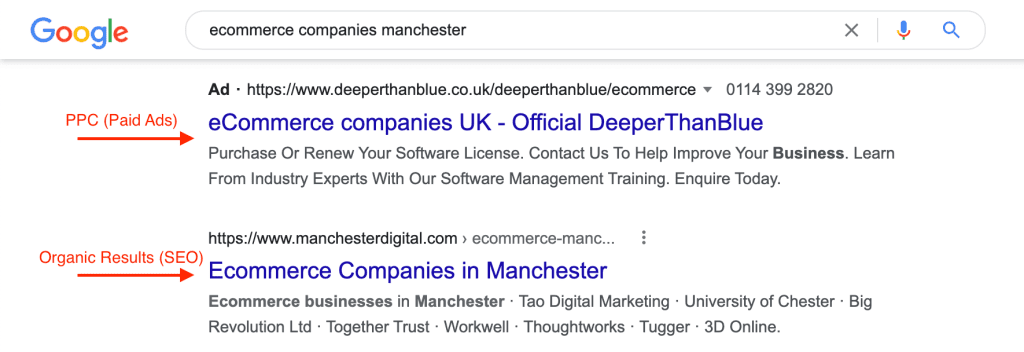
The results at the top with the yellow box are known as ‘paid ads’, but what we want to focus on is the SEO results. The top results are what Google deems to be the most accurate results for my search query. This then descends in the order of relevance, which is calculated by Google’s search algorithm.
What are Landing Pages for SEO?
Landing pages that are designed with SEO in mind are pages that have been fully optimised for search engines such as Google and Bing.
These pages usually have elements that appeal to search algorithms that are designed to decide whether a page is or isn’t of value to searchers.
It is important to not get confused with landing pages for PPC and also for SEO. There is a difference between the two.
PPC Landing pages are designed to work as either a one-time promotion or as a quick sell to users. The information on these pages is usually limited to simply try and attract sales.
On the other hand, SEO Landing pages are also there to convert, but they tend to be far more content-heavy for searchers. This is because Google’s search algorithm likes high-quality, original content on websites that answer queries that users are searching for.
With this in mind, here are the steps on how to create an SEO landing page.
1. Conduct thorough keyword research
Keyword research is what determines the terms that are used within a page to match relevant search engine queries.
Whilst this can be a long process, it is quite a simple one if you have the right toolkit available. There are certain types of software that you can use to conduct effective keyword research for your website:
a. SEMRush
This is arguably the best all-in-one SEO tool on the market. It is also excellent for conducting thorough keyword research.
The main reason SEMRush is such a great keyword research tool is it’s so versatile, and also offers a range of export options such as PDFs, Google Sheets and Microsoft Excel for your data.
To filter the best keywords, simply weigh up the monthly search volume against the keyword difficulty (this is how competitive a keyword is).
Every keyword will also be tagged under one of the following four keyword intents:
- Commercial – searchers that are investigating brands, services or products.
- Informational – searchers that are looking for an answer to a query, question or more general information
- Navigational – searchers that are looking for a specific website or page
- Transactional – Searchers that are looking to complete a transaction or purchase
In addition to the above, users can also conduct Keyword Gap Research, which provides a list of keywords that competitors are ranked on Google for, as well as the landing page associated with the ranking terms.
By using SEMRush, you will find relevant keywords to use for your landing page that will help it rank above competitors.
b. Ahrefs
Also known as the main competitor of SEMRush, Ahrefs is another brilliant SEO tool that allows users to conduct versatile and thorough keyword research.
The tool allows users to conduct effective keyword research, and just like SEMRush, it allows users to analyse the search volume, keyword difficulty and the position either your website or competitors’ sites are ranking within Google.
b. Google Trends
Whilst this tool does not offer as much depth as SEMRush or Ahrefs, it provides transparent insight into how a keyword or topic has performed over time, as well as how well it has performed in different countries.
To do this, all you need to simply do is visit the Google Trends and search for the terms you want to know more about.
This is an excellent tool to use when you are working within an industry that changes paces regularly.
2. Strategically place keywords on your landing page
It’s all well and good to collect a list of target keywords for your landing page, but they will be useless if you do not implement them properly.
It is important to already know where the keywords will be implemented before writing anything. This will help you to get ahead of the competition in SERPs.
There are a few things to consider when deciding where to implement your target keywords on your landing page:
a. Metadata
When your page ranks on Google, you will see a title and description underneath the URL. This is what is known as ‘metadata’.

The meta title (also known as the title tag) and the meta description are what appear in search results, but you can edit these within the website CMS such as WordPress.
It is important to note that the meta title should not exceed 60 characters, whereas the meta description should be a maximum of 155 characters.
b. Header Tags
When you want an official header on a page, the best SEO practice is to edit the HTML code to implement a header tag.
Header tags range from H1 to H6. The official best practice guidelines are to:
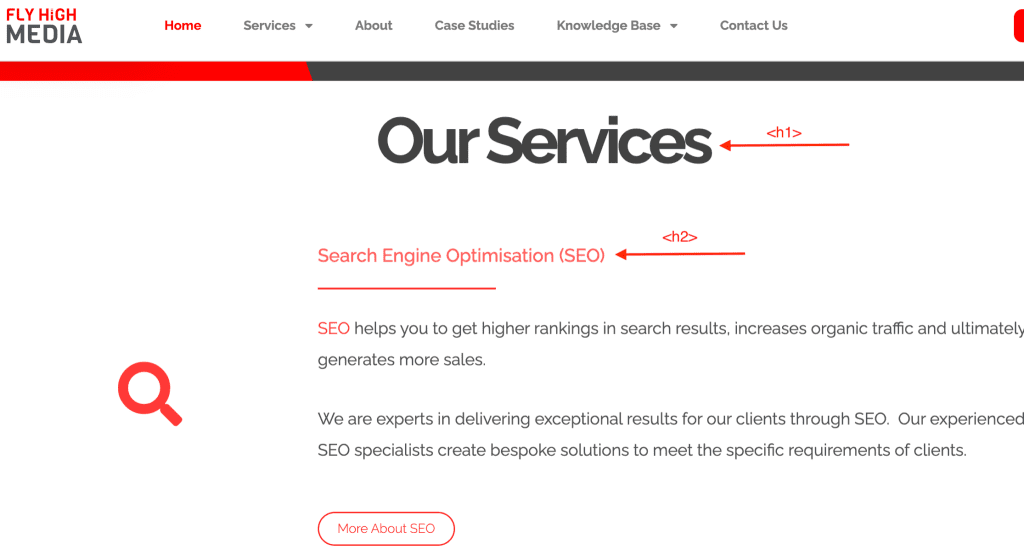
- Only have one H1 tag (this is your main heading)
- Use H2 tags as your main subheadings, then H3 under H2 tags etc
c. Image file names
It is important to give your images descriptive file names when you implement them on a page. This is because Google’s search algorithm cannot see your images, so it can only use a written description. In this case, this is the name of the image file.
Make sure you include relevant keywords in your image name to help Google understand the context of your image. You should also make sure to use dashes as spaces as well (do not use underscores) as this is preferred by Google.
d. Landing page copy
Ensure your keywords are implemented within your copy, but also make sure they are sparingly spread across the page. Aim to include your keyword every 100-200 words. Mentioning it in the first paragraph is also good for user experience.
If you use too many keywords within your copy, this might be listed by Google’s algorithm as a black hat SEO technique known as ‘keyword stuffing’. This can lead to your website being penalised by Google.
3. Acquire backlinks to your landing page
For years now, it has been essential to generate links to your page via external websites to boost organic traffic and rankings on Google. In today’s world, this is no different.
You might be thinking ‘why is this?’ and the simple answer is that Google sees other websites linking back to your site as someone vouching for you.
There are different methods of link building, and you should combine these in your off-page SEO strategy for the best results.
a. Broken link building
This is a quick and effective way to build links back to your landing page and website.
The correct way to do this is by only looking for pages that have 404 errors.
To find 404 links, you will need to focus your search on resource pages that are within your niche. For example, if your website is within the nutrition sector, you will search the below search strings in Google:
This will filter results to find more specific results than a generic search query would.
- “nutrition” + “resources”
- “nutrition” + “resource page”
- “nutrition” + “links”
- “nutrition” + “recommended sites”
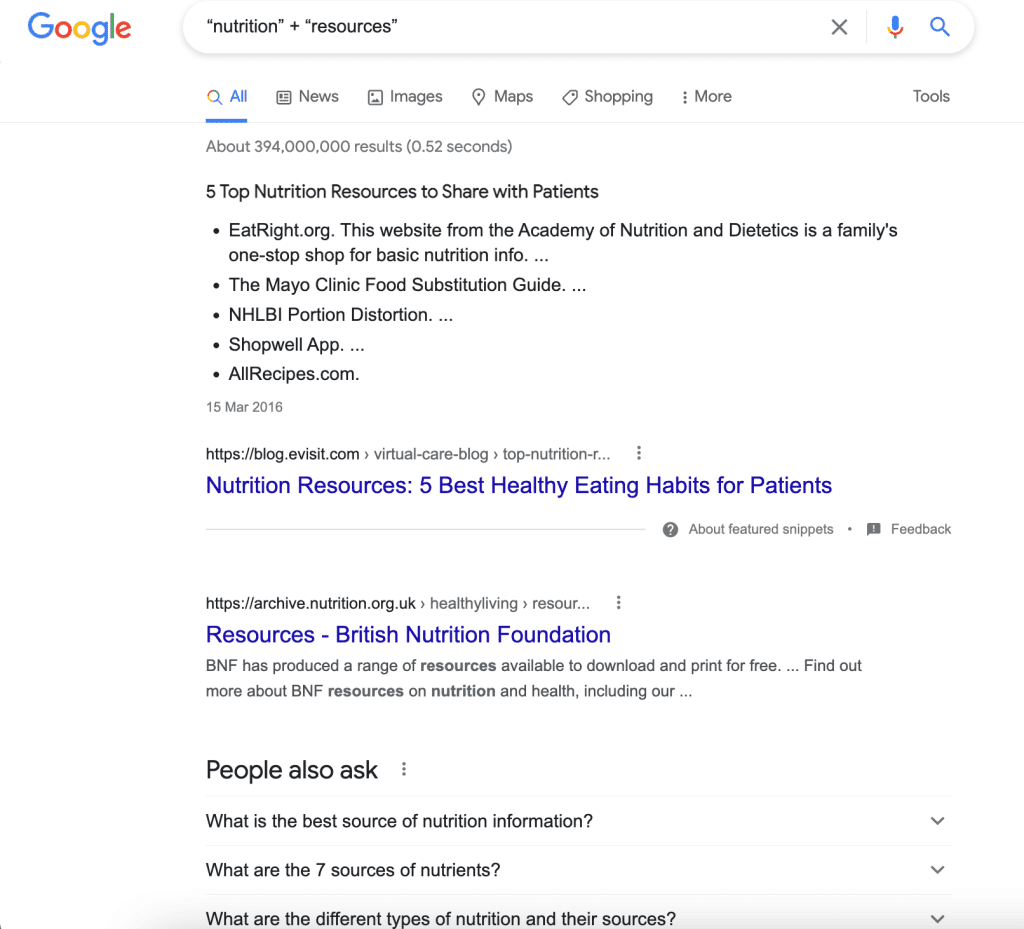
Once you find a broken link from the on-page results, the best strategy for success is to contact the site owner and inform them of any broken links you have discovered.
To find broken links, you can use the ‘Check My Links’ extension for Google Chrome. This highlights any broken links in red, so you will easily find some opportunities by using this.
b. Blogger outreach
Another great method of building links back to your website is by writing guest blog posts for other websites that have some kind of relevance to your site.
You don’t just have to write blog posts. You can also appear in interviews in podcasts, videos and other forms of media. A link can still be added back to your website via the page these are posted on.
The best thing to do before submitting guest posts is to conduct research into your industry. Try and find an influencer that writes a high number of posts, and within one of their published blogs, click on the author and find the URL of the headshot they are using for their profile.

From here, you can add the URL of the headshot into Google’s Reverse Image Search. You will then find a list of websites that contains published guest posts relevant to your industry.
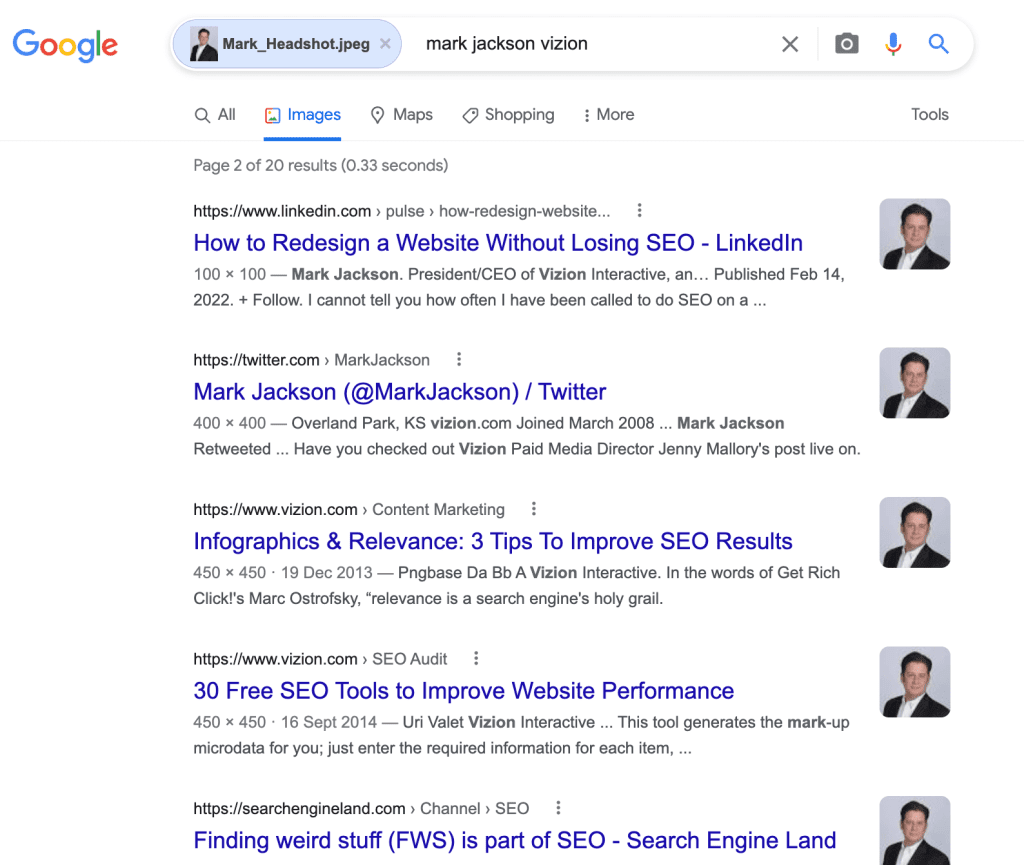
From here, you can begin the outreach process and add guest posts to these sites.
c. Infographics
Contrary to popular belief, Infographics are still an effective way to build links back to a website.
Whilst this might be a slightly more costly way of link building, it still isn’t as expensive as other methods and it can have a positive impact on your website.
There are some key pointers to follow when developing an infographic for link building:
- Use a relevant and trending topic
- Add interesting, concise information to the infographic
- Ensure your infographic uses the following layout:
- Include the best and most relevant content at the top
- Provide plenty of empty space so that your infographic is easier to read
- Structure it as a story - beginning of the story at the top, end of the story at the bottom
There are some other ways you can build backlinks to your website, such as:
- Submitting testimonials
- Adding links to industry-relevant directories
- Adding links to local directories
- Sending your products/services to bloggers that write reviews
- Reclaim lost backlinks
- Sign up to HARO (Short for ‘Help a Reporter Out’)
- Target websites that competitors have links from
4. Optimise your page speed
In any case, it is really important to ensure your page speed on your website is fast for both desktop and mobile.
This is important because it is one of the few factors that Google has confirmed it uses to rank pages within search results.
It is also important to optimise page speed, as website conversion rates drop an average of over 4% with every additional second of page-load time (between 0 to 5 seconds).
To monitor your website’s speed, you can use Google’s Pagespeed Insights tool which scores your page’s load speed out of 100 for desktop and mobile. Ideally, you want to be 90+ for both devices.
If you need to speed up your page, use the following techniques:
- Reduce file sizes such as images, PDFs and other on-page elements
- Switch your website to a faster host server
- Remove/deactivate any plugins that your website is not using
- Use a responsive design on your pages (this can really help mobile page speed)
5. Add FAQs to the bottom of your landing page
This might seem like a strange suggestion, but it does work. This is because you can implement structured data to your page that is specialised for FAQs.
If you’ve not come across structured data (also known as Schema) before, it is data that is hosted in a fixed field within a file. Ultimately, this is Javascript code that is added to a page that communicates to Google’s algorithm what the page is exactly.
An example of this would be FAQ schema. Within the code, you would include the questions and answers that are within your FAQ section on your landing page (or any other pages that include FAQs) in your structured data code, and you would implement this on your webpage.
From here, this gives your page the best chance of ranking higher on Google by being displayed as a ‘Rich Snippet’ in the SERPs. This is when a result in a search engine is displayed in a large box at the top of the results page.
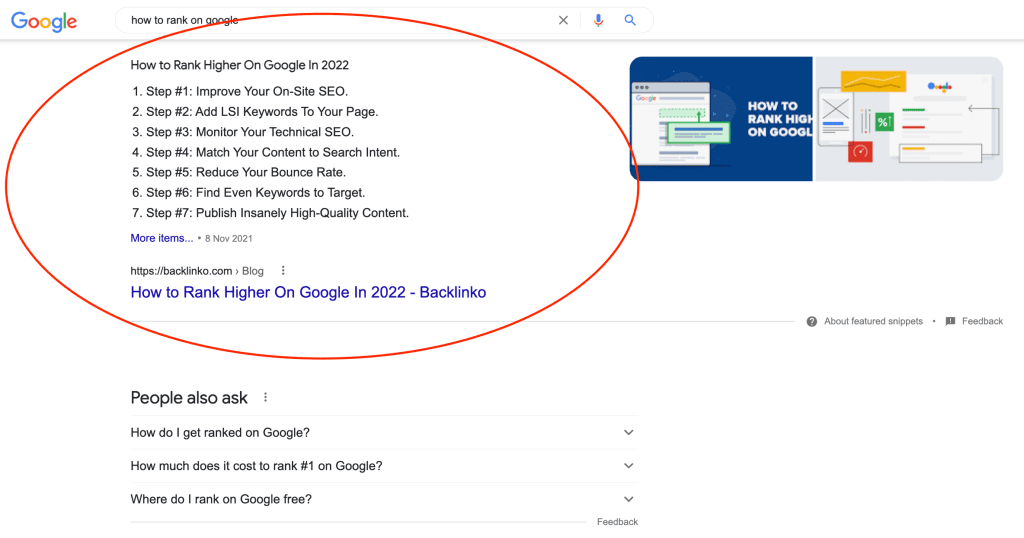
You might be thinking ‘I don’t know how to implement Javascript code, so how do I do this?’ Fortunately, there are alternatives for those who do not know how to edit code.
If you are using WordPress for example, you can use the Rankmath SEO plugin which provides a schema implementation for each page. All you would need to do is select the ‘FAQ’ schema and add that to the page.

From here, all you would need to do is add the FAQ’s questions and answers in the schema fields, and then click ‘Update’ on the page.
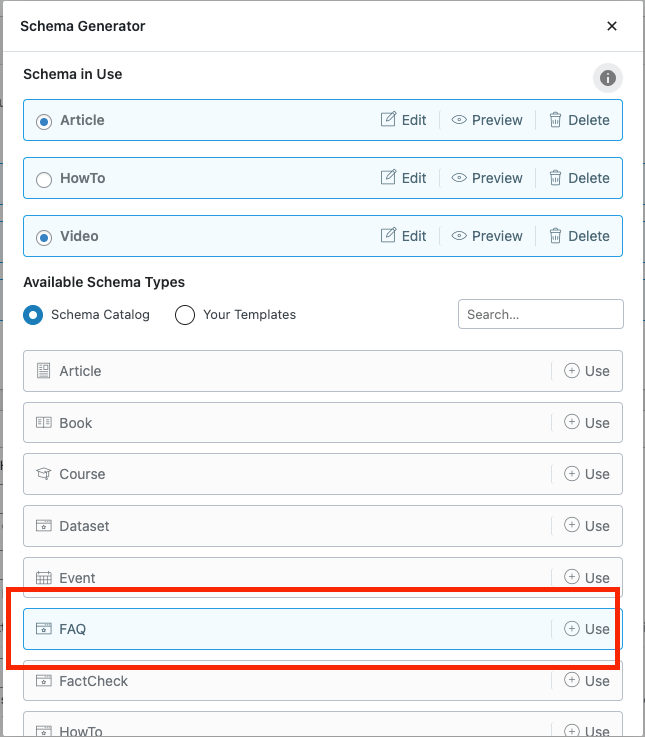
Once completed, you will have the relevant FAQ schema on your webpage.
Developing a landing page can be a daunting task, especially when it comes to optimising it for SEO. After reading this, you should have the confidence to create a fantastic landing page that uses all of these techniques. By using the above, you will have a content-rich landing page that is favoured by Google’s ranking algorithm.
For any further SEO help, fill in the contact form below.
Contact Us
Cheshire (Head Office)
Manchester
Get in touch
Let’s find the best solution for your business



